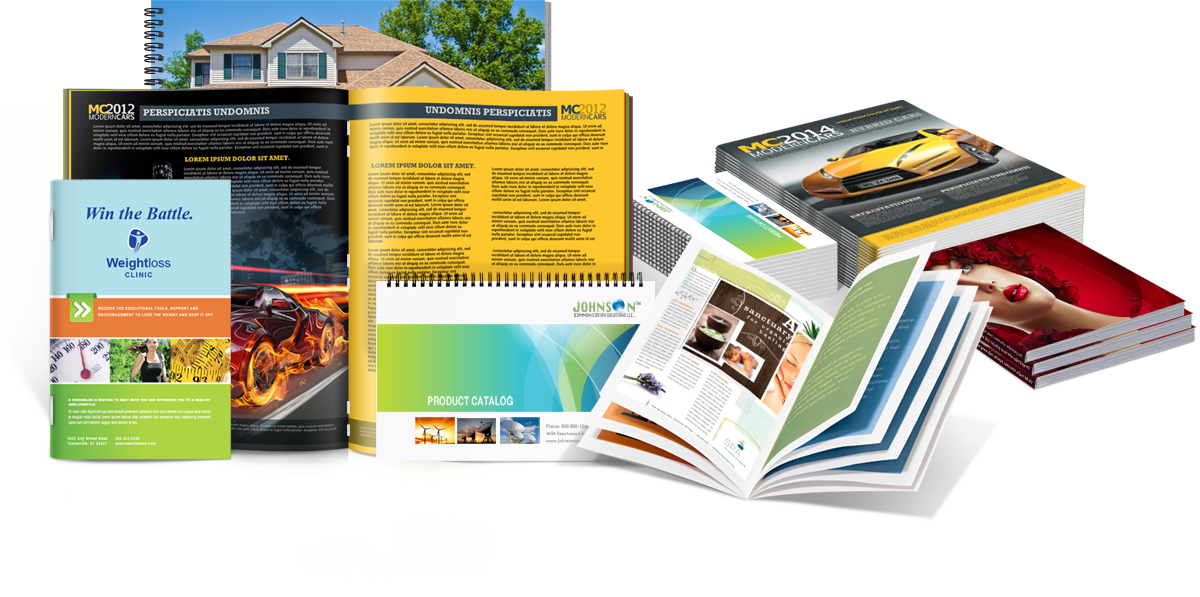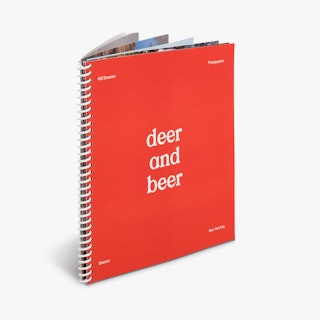How to Choose the Right Binding Style for Your Booklet Printing Needs
How to Choose the Right Binding Style for Your Booklet Printing Needs
Blog Article
The Crucial Overview to Understanding Pamphlet Printing Options and Techniques
The process of booklet printing entails several considerations that can greatly influence the last product. From choosing the appropriate layout and dimension to comprehending the nuances of binding approaches, each option plays an important role. Additionally, variables such as paper supply and printing methods additional influence the efficiency of the pamphlet. As one navigates these options, it comes to be necessary to understand how they adjoin and what that means for the total outcome.
Recognizing Brochure Layouts and Sizes
When taking into consideration brochure printing, recognizing the various layouts and sizes offered is essential for accomplishing the desired presentation. Pamphlets can be produced in many formats, including saddle-stitched, spiral-bound, and perfect-bound, each offering distinctive advantages. Typical sizes range from typical letter (8.5 x 11 inches) to smaller choices like A5 (5.8 x 8.3 inches), enabling versatility based upon web content and target audience.Selecting the suitable dimension can affect both the layout and reader interaction. Bigger dimensions might fit visually driven material, while smaller formats may be extra portable and easy to use. In addition, the number of pages impacts the option of binding approach, as thicker pamphlets might require sturdier bindings. Eventually, comprehending these elements enables an extra customized approach, guaranteeing that the final product lines up with the designated message and visual, improving the general performance of the interaction.
Picking the Right Paper Supply

Binding Approaches: Factors To Consider and alternatives
When it comes to binding methods for brochures, a number of choices are available, each with unique benefits. Saddle stitch binding supplies an affordable option for thinner pamphlets, while excellent binding strategies provide a more polished try to find thicker publications. Wire-O binding sticks out for its longevity and convenience of usage, making it perfect for files that need versatility.
Saddle Stitch Binding
Saddle stitch binding provides a functional and economical option for setting up brochures, making it a popular option among publishers and companies. This binding method entails folding sheets of paper in fifty percent and stapling them along the fold line, producing a cool and orderly look. Normally appropriate for brochures with a lower page matter, saddle sewing is optimal for magazines, brochures, and educational products. The simplicity of this technique permits fast production and is often preferred for marketing items or brief runs. It is important to keep in mind that saddle stitch binding might not be suitable for thicker pamphlets, as the spine might not hold up under enhanced weight. Overall, it continues to be a reputable option for lots of printing projects.
Perfect Binding Strategies
Perfect binding is a commonly made use of method that gives a polished and specialist surface to magazines and brochures. This approach involves gluing the web pages together at the spinal column making use of a solid adhesive, enabling a tidy side and the capability to hold a bigger number of pages contrasted to saddle stitching. Perfect binding is especially ideal for thicker booklets, such as directories and annual reports, where a strong, level spine is preferred. In addition, it provides the option for a printed cover that can be created to boost visual charm. Considerations such as page count, paper weight, and the meant usage of the brochure need to be taken right into account, as they can affect resilience and overall quality.
Wire-O Binding Choices
Wire-O binding, recognized for its toughness and adaptability, uses an excellent option for booklets that require easy page turning and a professional appearance. This binding method employs a series of metal loops that hold pages securely, permitting them to exist level when open. It is specifically ideal for magazines, discussions, and handbooks as a result of its durable nature. Wire-O binding is offered in various shades and sizes, fitting different web page counts and thicknesses. In addition, it allows the inclusion of covers and tabs, boosting the brochure's overall visual. Factors to consider for Wire-O binding include the selection of cable color, the dimension of the loops, and the extent of modification preferred, all of which can greatly influence the final item's look and performance.
Digital vs. Offset Printing: Which Is Best for You?
When picking a printing technique for booklets, recognizing the differences in between digital and counter printing is crucial. Digital printing uses modern innovation to produce high-grade prints swiftly and affordably, making it excellent for short runs or tasks needing fast turnaround times. It permits personalization, providing the capacity to print on-demand with marginal waste.In contrast, balance out printing is a traditional technique that excels in creating huge quantities with consistent quality. It involves transferring ink from a plate to a rubber covering, then to the paper, which leads to accurate details and vivid shades. Offset printing typically requires longer setup times and is a lot more affordable for bigger volumes.Ultimately, the selection in between digital and offset printing depends on task requirements, budget, and desired amount. For little, time-sensitive tasks, electronic might be the very best choice, while countered may be more effective for larger, premium manufacturings.

Designing Your Booklet: Tips and Ideal Practices
When making a brochure, cautious interest to layout, typeface choice, and color use can considerably improve its effectiveness. A well-structured layout overviews the visitor's eye, while ideal typefaces guarantee readability and communicate the preferred tone. Additionally, reliable use of color can stimulate emotions and emphasize crucial info, making the overall layout much more impactful.
Picking the Right Format
Exactly how can one efficiently select the appropriate design for a brochure? Initially, it is important to evaluate the booklet's objective and target market. A tidy, arranged design boosts readability and involvement. Using a grid system can help in lining up elements consistently, producing an expert appearance. In addition, incorporating visual pecking order through differing dimensions and placements of photos and message can guide the viewers's eye and stress key information. It is likewise vital to leave adequate white room, which protects against overcrowding and permits much better emphasis. Lastly, testing various layouts via mock-ups can supply insight right into how the style executes in real-world scenarios, making sure that the end product satisfies both useful and aesthetic needs.
Picking Appropriate Font Styles
A well-chosen typeface can greatly boost the overall design of a pamphlet, enhancing the design and enhancing the material's message. The choice of font styles ought to think about readability, especially for body message, as Visit Your URL it ensures the details is available to all visitors. Sans-serif font styles are often favored for digital layouts, while serif fonts can offer a typical feel in printed products. It's advisable to limit font choices to 2 or 3 to maintain aesthetic comprehensibility. Furthermore, font dimension plays an important function; headings need to be not overwhelming but distinct, while body text must fit for analysis. When choosing fonts, placement with the brochure's theme and target market is crucial for efficient communication and visual charm.
Effective Use Color
Shade acts as an effective tool in pamphlet design, forming perceptions and assisting reader feelings. It can stimulate feelings of calmness, depend on, or exhilaration, depending on the shades picked. Developers should think about shade concept concepts, guaranteeing that the selected scheme straightens with the booklet's message and target audience. As an example, making use of cozy shades like red and orange can create urgency, while cooler tones like environment-friendly and blue foster tranquility.Additionally, comparison plays a vital role; complementary colors can improve readability and aesthetic charm. Consistency in shade use throughout web pages better strengthens brand name identification and communication. Eventually, efficient color application not only captures interest but likewise strengthens the brochure's purpose, making it a vital element of successful design.
Finishing Touches: Coatings and Unique Results
While lots of think about the material and layout of a booklet one of the most essential components, the completing touches, such as finishings and special results, play a crucial duty in improving its overall allure. Coatings can supply security and resilience, ensuring that the pamphlet stands up to wear and tear. Matte coatings use an advanced, non-reflective surface area, while shiny coverings can make shades show up more vivid and captivating. Unique effects, like embossing or aluminum foil stamping, include a tactile measurement that can create a remarkable impression. These strategies can highlight particular locations, accentuating crucial info or developing visual passion. Additionally, UV layer can offer a high-shine coating that elevates the total look.Together, these finishing touches not just enhance the brochure's visual but likewise communicate professionalism and trust and attention to detail, inevitably leaving a lasting influence on the viewers.
Cost Factors To Consider for Pamphlet Printing
Understanding the different price considerations for brochure printing is necessary for companies and organizations aiming to enhance their budget plans. Trick factors influencing expenses consist of the selection of binding, paper, and ink methods. Better materials, such as premium paper or specialized inks, normally increase the overall expenditure. Additionally, the dimension and web page count of the brochure play a significant function; larger brochures call for more sources and time to produce.Another important factor to consider is the printing strategy, whether electronic or offset, as each has its very own rates framework and viability for various amounts. Organizations should also consider layout prices, which can differ based upon intricacy and making use of expert services. Ultimately, shipping and handling fees can contribute to the total amount, specifically for huge orders. By examining these aspects, organizations can make educated decisions that straighten with their financial capacities while accomplishing the wanted top quality in their published products.
Often Asked Concerns
What Are the Environmental Impacts of Pamphlet Printing?
The ecological effects of booklet printing consist of logging from paper production, carbon emissions from transport, and waste generation from disposed of materials - Booklet Printing. Lasting methods, such as using recycled paper and environmentally friendly inks, can mitigate these results
Exactly How Can I Ensure Shade Accuracy in My Booklet?
To assure color precision in a you can try these out brochure, one should make use of calibrated displays, utilize professional shade profiles, perform test prints, and pick top notch printing services that supply shade matching and proofing options for ideal results.
What Is the Regular Turnaround Time for Pamphlet Printing?
The normal turn-around time for pamphlet printing varies relying on the complexity and amount - Booklet Printing. Typically, it varies from a few days to 2 weeks, affected by aspects such as printing approaches and finishing needs
Exist Minimum Order Quantities for Booklet Printing?

Can I Publish Pamphlets in Multiple Languages?
Printing pamphlets in numerous languages is possible. Many printing solutions provide choices for multilingual or multilingual formats, enabling reliable interaction. Careful planning guarantees that develop aspects fit different languages without jeopardizing readability or aesthetics. Additionally, factors such as paper stock and printing techniques more affect the performance of the pamphlet. When taking into consideration pamphlet printing, comprehending the different styles and sizes readily available is necessary for attaining the desired presentation. When choosing a printing approach for booklets, recognizing the distinctions between electronic and counter printing is necessary. Furthermore, the dimension and web page count of the booklet play a significant duty; bigger brochures require even more sources and time to produce.Another essential consideration is the printing strategy, whether electronic or offset, as each has its very own prices structure and suitability for various quantities. The environmental influences of brochure printing include logging from paper production, carbon emissions from transport, and waste generation from discarded products.
Report this page